Matador Network's Blog, page 1074
June 18, 2019
Bruges measures against overtourism
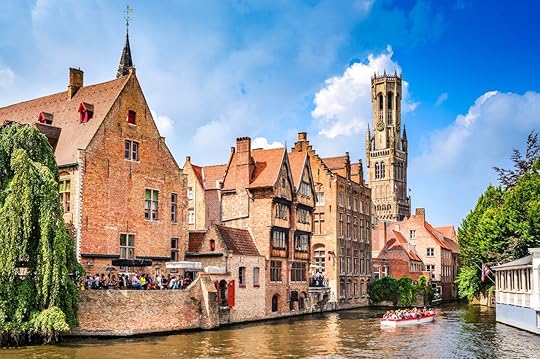
It may look like it’s straight out of a fairy tale, but Dirk De fauw, the mayor of Bruges, is afraid that his small city, an incredibly popular tourist destination, is turning into actual Disneyland.
To remedy the situation, the Flemish city is now implementing new regulations to curb overtourism, such as a cap on the number of cruise ships allowed in the port and a ban on all advertising campaigns that encourage daytrippers. Now, only two ships will be allowed to dock at a time — compared to the previous five — and only on weekdays to prevent weekend overcrowding.
Mayor Dirk De fauw said, “We have to control the influx more if we don’t want it to become a complete Disneyland here. We have to aim for quality tourism, people who stay here for a few days, eat well, visit museums.” According to The Guardian, “Bruges is visited by 8.3 million people a year […] and yet just 2.5 million of those spend a night.”
During peak tourism days, visitors to the small city can outnumber the 120,000 residents three to one, and it’s easy to understand why. The historic center was designated a UNESCO World Heritage site in 200, and is considered to be one of the best examples of a preserved medieval town in Europe. 

More like this: The 7 most fun (and delicious) things to do in Brussels, Belgium
The post Bruges fights back ‘Disneyfication’ with overtourism measures appeared first on Matador Network.

West Nile virus cases in Greece

Travelers don’t typically associate Greece with deadly mosquito-borne diseases, but travelers to the Mediterranean country now need to watch out for the West Nile virus.
According to The Guardian, ahead of the busy summer season, Greece’s Foreign Office included mosquitos in the list of threats tourists are facing this season, as 316 were infected by the virus in 2018 and 50 Greeks died.
According to the Centers for Disease Control and Prevention, most infected persons exhibit no symptoms, but about 20 percent develop fever and other symptoms such as headache, body aches, joint pains, vomiting, diarrhea, or rash. About one out of 150 people infected with the virus develop a serious, sometimes fatal, illness.
To prevent an outbreak even worse than last year’s, the government has launched an education campaign, distributing leaflets that detail the dangers of the disease and preventative measures.
There are no vaccines to prevent or medications to treat the West Nile virus in people. Preventive measures to protect yourself against the mosquito-borne disease include:
Using insect repellent
Wearing long-sleeve shirts and long pants
Sleeping under a mosquito net or choosing a hotel with air conditioning and screens on doors
According to The Guardian, Italy, Cyprus, Romania, and Serbia have also reported an increase in the infection rate of the West Nile virus, so even if Greece isn’t on your itinerary this summer, you should probably taking cautionary measures no matter where you’re traveling. 

More like this: These are the travel vaccines you actually need, according to an expedition doctor
The post Visitors to Greece told to watch out for West Nile virus appeared first on Matador Network.

Best natural history museums

Whether you’re traveling with the fam seeking something educational and entertaining, or you’re just a self-avowed science nerd, natural history museums are the bomb. They’re particularly awesome at providing kids (and kids at heart) with a sense of place and history, showcasing the region’s plants and animals, living and extinct, and featuring artifacts that humanity has crafted. Natural history museums tend to have an outer space or oceanic element, and lately, a climate change-related feature, examining local and global phenomena like glacial melting or earthquakes. At this point, natural history museums are pretty much expected to have a dinosaur skeleton — or several — to give visitors an idea of what came before their era. Curators know that just looking at rare treasures can get boring — visitors want to touch — so many museums have an experiential element, like hands-on animal exhibits, 3D theaters, and planetariums with laser shows, making for exciting, all-day excursions. The following 11 natural history museums are a great addition to any itinerary for kiddos, geeks, and everyone in between.
1. Museum of New Zealand (Te Papa Tongarewa) — Wellington
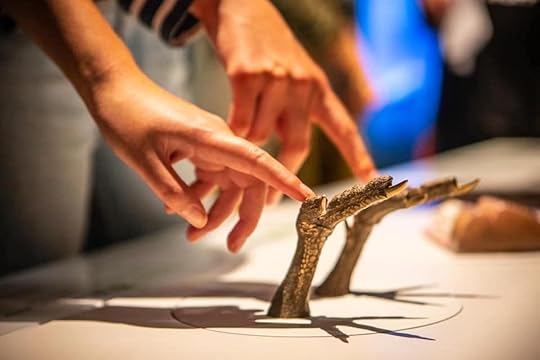
Photo: Te Papa/Facebook
The endearing nickname “Te Papa” is an abbreviation of the Māori translation of “the Museum of New Zealand.” It’s free to get in to see the collaborative, bicultural museum’s awesome permanent collections of artifacts iconic to New Zealand — and the holdings aren’t just science- and nature-related. Rather, there are five types of collections in the Wellington facility: art, history, Māori, Pacific cultures, and natural history. Plus, the online collections showcase more than 800,000 images of Te Papa’s holdings — from antique toys to kiwi feather cloaks. Te Papa is open daily except for Christmas from 10:00 AM to 6:00 PM. Admission is free barring some special exhibits; find out more on its website.
2. National Museum of Natural History — Washington, DC
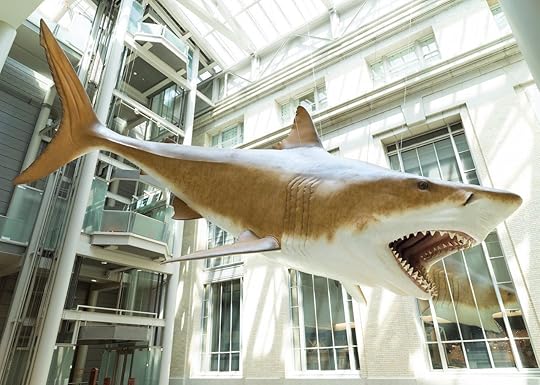
Photo: Smithsonian’s National Museum of Natural History/Facebook
It doesn’t get much better than the Smithsonian’s National Museum of Natural History on the Mall in Washington, DC. This museum is all about three-story-tall dinosaur skeletons, monstrous deep-sea creature fossils, the ancestral human lineage, and multimillion-dollar kaleidoscope gemstones. Feedings of live creepy crawlies like tarantulas and butterflies occur throughout the day. The museum has 145 million holdings, so there’s no way to see the treasures on display in one day. Hours are extended during the summer, from 10:00 AM to 7:30 PM most days of the week, so you can see more than usual. Admission is free. Check for complete visitation details on its website.
3. Natural History Museum — London

Photo: Natural History Museum, London/Facebook
London’s Natural History Museum in South Kensington is something like a grand-scale hall of curiosities divided into four zones: blue (biology); green (evolution); red (geology); and orange (outdoors/hands-on). A giant blue whale skeleton stretches along the length of the Green Zone’s ceiling. In the Red Zone, you’ll also find some of the world’s rarest minerals, like a fully crystallized gold nugget found in Australia. The Blue Zone holds a collection of interesting creatures preserved in jars of spirits, as in the alcoholic variety. Luckily, outside the museum, the Orange Zone features a (living!) wildlife garden, which could help offset any guilt acquired by looking at dead critters floating in containers of booze. There’s a space area, a human evolution exhibit, and a British animalia collection. The museum also has a branch in Tring, and entry to both branches is free. Both are open every day of the year except December 24-26. The Kensington branch is open from 10:00 AM until the last admission at 5:30 PM. The Tring branch keeps slightly different hours and exhibits. Check out the museum’s website for full details.
4. Field Museum — Chicago
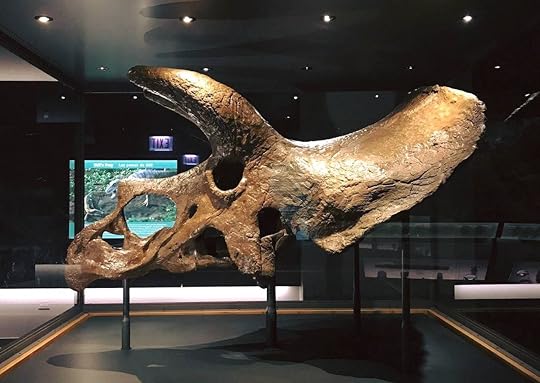
Photo: Field Museum/Facebook
The Field Museum in Chicago is world famous for many reasons. For starters, it hosts Sue, the world’s most complete Tyrannosaurus rex, as well as a huge collection of human and animal mummies in a replicated mastaba in the Egyptian exhibit. The museum also holds the remains of the world’s largest dinosaur (that’d be Máximo, the 70-ton Argentine Titanosaurus, which is still the biggest known creature ever to have lived). Fans rave about the museum’s ground-floor bathrooms near the gift shop, so check those out. There’s also a 3D movie theater showing cool science flicks, and revolving special exhibits, lectures, community outreach, and workshops. Admission is $38 for adults including a 3D movie and $24 without. There are some special discount days throughout the year. The museum is open every day but Christmas, from 9:00 AM to 5:00 PM, with the last admission at 4:00 PM. Check out the website for more information.
5. Natural History Museum — Vienna
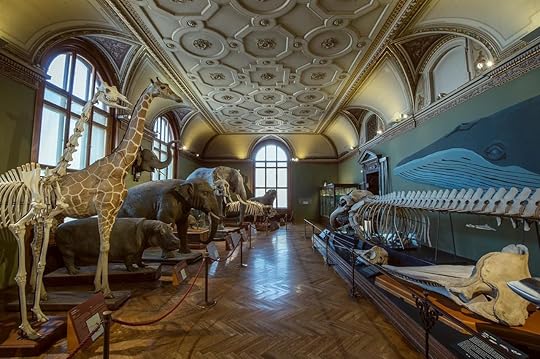
Photo: NhM Naturhistorisches Museum Wien/Facebook
The Natural History Museum in Vienna opened 125 years ago in a gorgeous marble and limestone building that was constructed between 1871 and 1881, so keep your eyes peeled for some gorgeous architecture while you’re inside. Lovers of ancient art flock to see the museum’s prize: the “Venus de Willendorf,” a carved stone female effigy that is almost 30,000 years old. As the first museum dedicated to the theory of evolution, Charles Darwin’s likeness is represented throughout the building, on friezes and paintings. The museum also holds the world’s largest collection of meteorites, and many dinosaurs and fossils. All this stands in contrast with a forward-thinking digital planetarium, featuring virtual reality tours of the Milky Way and Saturn’s rings. Past meets present with regard to the museum’s primary research focus, which is the implications of climate change on the future of evolution and extinction. The museum is open every day from 9:00 AM to 6:30 PM, except on Wednesdays when it’s open until 9:00 PM, and it’s closed on Tuesdays. Admission for adults is about $13.50, and extra for the planetarium. Visit the website for more information.
6. American Museum of Natural History — New York City
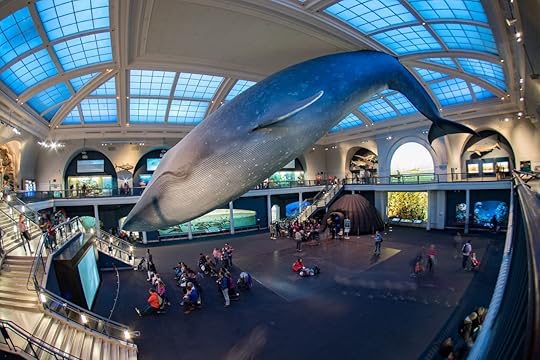
Photo: Andrea Izzotti/Shutterstock
New York’s American Museum of Natural History is one of the largest in the world, with 33 million specimens inside. It’s also one of the world’s most visited — along with, but not to be confused with, the Smithsonian’s natural history museum in DC. One of the coolest things about the American Museum of Natural History is that it hosts sleepovers from time to time, which served as the inspiration for the 2006 Ben Stiller classic flick, Night at the Museum. Ongoing exhibits include dinosaurs (including a nearly complete T. rex skeleton, always a crowd pleaser); a hall of ocean life; the hall of North American forests; a theater with a giant screen; and a planetarium. Admission for adults ranges from $23 to $33 depending on attractions, but there’s a little-known pay-as-you-wish option, only available at the counter. Learn more about visiting the museum on its website.
7. Beijing Museum of Natural History — Beijing

Photo: Elizaveta Galitckaia/Shutterstock
Admission to most exhibits in this gigantic Chinese natural history museum is free. In this case, “gigantic” means more than 86,000 square feet of display space, so there’s no way a person could see everything in a day. The museum is best known for its collection of rare, mummified, and fossilized dinosaurs, especially the world’s only known intact Stegodon zdanskyi skull. Another interesting exhibit is the South China Sea marine life display, with 10 sections and more than 500 specimens. The museum is open from 9:00 AM to 5:00 PM daily except for Mondays, with last entry at 4:30 PM. Check out the museum’s website before setting off.
8. National Museum of Natural History — Paris
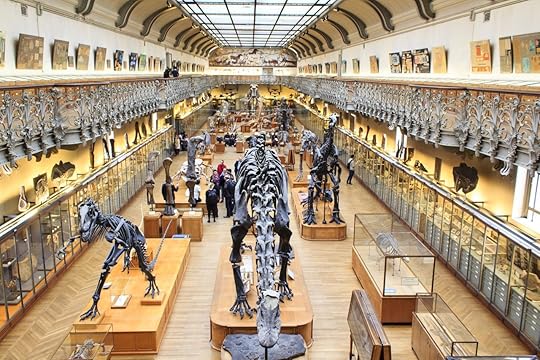
Photo: Rrrainbow/Shutterstock
The French National Museum of Natural History is actually 12 sites in one, in Paris and Ile-de-France. The whole entity is unified with a mission to apply its diverse research findings to activism and education. There are several types of botanical gardens, a children’s museum, a Museum of Man, and the natural history museum proper, which itself is divided into four sections. There is an entire building dedicated to geology, and another is set aside for comparative anatomy and paleontology. A Cabinet of Virtual Reality — a first for a French museum — is located in the Great Gallery of Evolution. The museum is on top of social media trends, with a YouTube channel and a lively Twitter account. It takes a liberal stance about topics like migration and climate change, and ensures that visitors with limited mobility and intellectual challenges can enjoy the museum alongside everyone else. Ticket prices and hours vary depending on which sites are visited. Check out details on the website.
9. La Plata Museum — Argentina
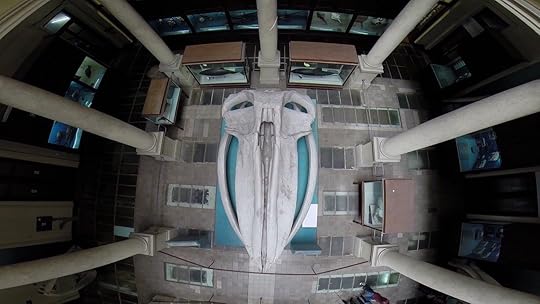
Photo: Museo de La Plata/Facebook
Just outside Buenos Aires is La Plata, Argentina. Its museum houses three million natural history relics in its 20 permanent exhibition halls, from fossils to living plants. La Plata has a paleontology hall with lots of dinosaur fossils and is known for its rare mycology collection. The museum is strong on archaeology as well: People travel from all over to see its exhaustive Archaeology of the Americas collection. One of the most precious holdings is its Egyptian collection. The Sudanese government donated these pieces — mostly hieroglyphic inscriptions of everyday life — to the museum in the 1960s as thanks for rescuing them from flood destruction when the Aswan Dam broke. The gift also included female mummies and a funerary trousseau, among other irreplaceable objects. The museum is open Tuesday through Sunday, except some holidays, from 10:00 AM to 6:00 PM. Adult admission is about $1.50, though kids 12 and younger get in free. On Tuesdays, it’s free admission for everyone.
10. Melbourne Museum — Australia

Photo: Melbourne Museum/Facebook
The Melbourne Museum isn’t just a natural history museum, but there’s certainly a significant enough element of plants, animals, other such treasures to satisfy anyone’s thirst for knowledge. Some exhibitions focus on indigenous Australian culture and artifacts, and their usage of flora and fauna. There’s an experiential Mind and Body Gallery, in which visitors explore the mind via thoughts, emotions, and dreams. Museum-goers walk through a stand of Victoria’s living forest, and, of course, there are dinosaurs (along with more than 600 birds, reptiles, and amphibian specimens from around the world). There’s an IMAX theater, exhibits on marine life and climate, and an ongoing microbe gallery that explores what’s going on in the human gut. The museum is open every day except Good Friday and Christmas from 10:00 AM to 5:00 PM. Admission is about $10. Bonus: The museum touts itself as autism-friendly, offering maps to high- and low-sensory spaces, social scripts, and quiet zones.
11. Lee Kong Chian Natural History Museum — Singapore
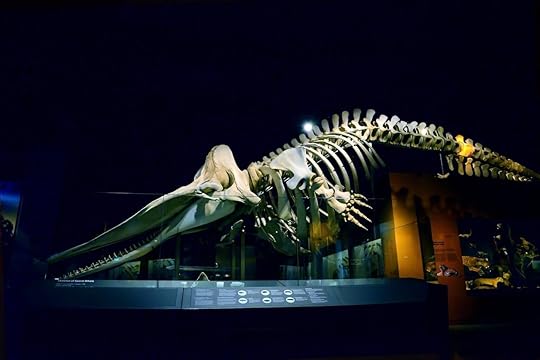
Photo: Lee Kong Chian Natural History Museum/Facebook
The Lee Kong Chian Natural History Museum in Singapore focuses on Southeast Asia conservation and biodiversity. Each of the three floors represents a different time period or theme, including heritage (with a Cabinet of Curiosities); organic material and biodiversity; and Singapore Today, featuring information on geology and earth-related activism. The museum is home to one million zoological species representing 10,000 animals, many of which are endemic to the region. Critters on display range from pangolins to fish parasites. The three sauropod skeletons and the herbarium full of rare flora are the highlights of a visit. The museum is open every day except Mondays from 10:00 AM to 7:00 PM with last admission at 5:30 PM. Adult entry costs about $12. 

More like this: The ultimate rainy day tour of London’s museums
The post The 11 best natural history museums in the world appeared first on Matador Network.

June 17, 2019
Best coffee shops and cafes in Milan

When Starbucks opened its first Italian location in Milan in late 2018, it was enough to make you wonder if Italians had lost their coffee pride and succumbed to the Starbucksification of the world. Turns out quite the opposite is true.
Italy is a country deeply rooted in tradition, especially when it comes to how coffee is ordered, yet its coffee scene is evolving. Milan, like other Italian cities, is riding the “Third Wave” of coffee, which means that people are concerned with coffee origins and artisanal methods of production. To meet this demand, Milan’s coffee shops are serving specialty coffee made from the highest quality beans, which are carefully roasted to maintain the best quality.
This renewed respect for coffee is in line with how coffee has historically been viewed in Italy. Coffee first arrived in Venice toward the end of the 16th century. It was initially expensive and reserved for the rich until the proliferation of bottega del caffé (coffee shops) in the 1700s. Coffee houses became meeting places for philosophers and scholars, the so-called caffè letterari, where people discussed revolutionary ideas.
Italians cemented their role in coffee history in the late 1900s with the birth of the espresso. The espresso machine was invented in Turin by Angelo Moriondo, then improved and marketed by Milanese manufacturers Luigi Bezzera and Desiderio Pavoni. Traditional, straightforward Italian espresso drank standing by the bar with a side glass of water became the norm, and generations of Italians proud of their coffee culture have resisted anything new. But even the deepest roots can’t avoid change.
The so-called cervelli in fuga, the “escaping brains” who left to find better job opportunities, are bringing back coffee techniques they found abroad. Part of this is a return to manual work and human connection in a digital age, and another part is an awareness of specialty coffee produced with a sense of responsibility for the welfare of foreign workers and manufacturers.
It’s still easier to find a quickly served espresso in Milan than it is to find specialty coffee. The first world-class coffee shops started opening up in the mid-2010s, and today, there are a handful of places where you can experience the best of Milan’s cutting-edge specialty coffee. These are the coffee shops to taste for yourself why Milan is, once again, somewhere you can count on for a quality cup.
1. Orsonero

Photo: ORSONERO COFFEE/Facebook
Widely considered the first specialty coffee shop in Milan, Orsonero opened in 2016. It’s operated by Canadian Brent Jopson and his Milanese wife Giulia Gasperini. The shop has an inviting neighborhood feel that contrasts with the modern, sophisticated interior design. Rather than follow the design lead of the Italian cafes in centuries past, Jopson and Gasperini opted for a modern look that can be found in cafes from London to New York and back. An ever-changing list of roasts means there’s always something new to try. You’ll hear a lot of English being spoken, but Orsonero also has its fair share of locals who’ve become regulars.
What to order: Filter coffee and a cappuccino
Where: Via Giuseppe Broggi 15 20129, Milano
2. Moleskine Cafè

Photo: Moleskine Café, Milan Corso Garibaldi/Facebook
In the heart of the Milanese artists quarter Brera, Moleskine Café combines specialty coffee with literature, throwing it back to the old concept of caffè letterario. It’s run by the same Moleskine brand that makes notebooks and other work materials favored by artists, writers, and designers, and the customer base reflects that. Here, you can enjoy a cup from the choice of blends that use beans from Rwanda, Costa Rica, Honduras, and Guatemala, as well as browse around the famous collection of stationary and writing supplies.
What to order: Filter coffee and an Americano
Where: Corso Garibaldi 65 20121, Milano
3. Out of the Box
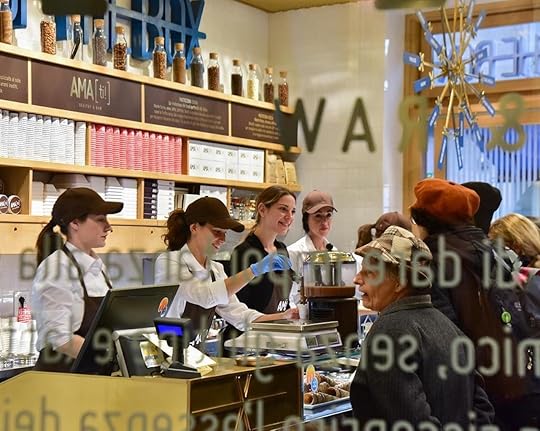
Photo: Out of the Box, Via Malpighi 7, Milano/Facebook
Don’t be concerned if the shop front confuses you. As the name suggests, there’s nothing conventional about Out of the Box, and it looks nothing like a conventional coffee place. It’s one of the best gelaterie in town and also makes also an incredible coffee. The idea of combining incredible gelato and specialty coffee came from entrepreneur Flavio Sears who, thanks to decades of experience in the food and beverage marketing industry, was able to create this great mashup.
What to order: Filter coffee
Where: Via Marcello Malpighi 7 20129, Milano
4. Cofficina Ticinese 58
Located in one of the hippest areas of Milan, Corso di Porta Ticinese, Cofficina Ticinese 58 opened in August 2017 and soon became the place to go for coffee in Ticinese. Here, English-speaking expats, tourists, and trendy locals gather to share their love and knowledge of specialty coffee. Small and always packed, a lucky few can claim a spot on the cozy couch in the lounge area. Others sit by the wall-mounted bar and observe the baristas do their magic.
What to order: Espresso and filter coffee
Where: Corso di Porta Ticinese 58 20123, Milano 

More like this: 7 unique ways people drink coffee around the world
The post Where to get a taste of Milan’s rising specialty-coffee scene appeared first on Matador Network.

Cape Breton Island, Nova Scotia

Nova Scotia hangs off of Canada’s eastern coast, almost entirely surrounded by the sea. At the northeastern end of this small province, Cape Breton Island is a world of towering cliffs, wild shorelines, and Gaelic ancestry. From one of the world’s most beautiful road trips to marine wildlife to outdoor pursuits, and from local crafts to excellent seafood, Cape Breton feels like a well-deserved retreat in a largely untouched region of Nova Scotia. Here’s how to enjoy it.
1. Drive one of the world’s most spectacular roads.

Photo: Rob Crandall/Shutterstock
After flying into Halifax, you’ll drive about three hours before crossing over the unassuming Canso Causeway onto Cape Breton Island. Soon you’ll hit the John Cabot Trail. Named after explorer John Cabot, the 185-mile-long Cabot Trail hugs most of the island’s coastline, cutting across the north end of Cape Breton alongside Cape Breton Highlands National Park. It’s rightly regarded as one of the most stunning roads you can drive.
The choice is yours to drive the Cabot Trail clockwise or counterclockwise. The trail can be driven in eight hours, but depending on how much hiking and sightseeing you opt for along the way, consider taking three to four days. That gives you plenty of time to explore the fishing communities, sample variations of the island’s seafood chowder, pursue outdoors activities, and gaze at the amazing views.
2. Go whale watching.
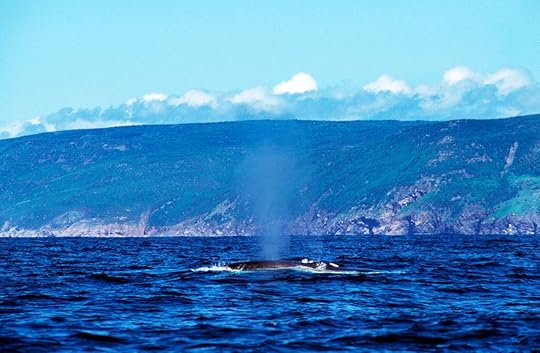
Photo: Malachi Jacobs/Shutterstock
Prime whale watching, some of the best in Nova Scotia, is found in this region. Zodiacs piloted by Captain Mark’s Whale & Seal Cruise often deliver close encounters with these behemoths, and come equipped with a hydrophone to hear whales sing — conditions permitting. Spectacular coastal views of Cape Breton Highlands National Park are an added bonus.
Summer into fall is peak whale-watching season with most cruises sighting a whale, although it’s not guaranteed. In July, pilot whales migrate through Nova Scotia’s waters in large numbers, staying until October. Late August through September, humpbacks and dolphins come close to the shoreline following the fish. Be forewarned, though: Due to Transport Canada’s strict wind regulations, in some instances cruises may be canceled up to the time of departure.
3. Walk the Skyline Trail.
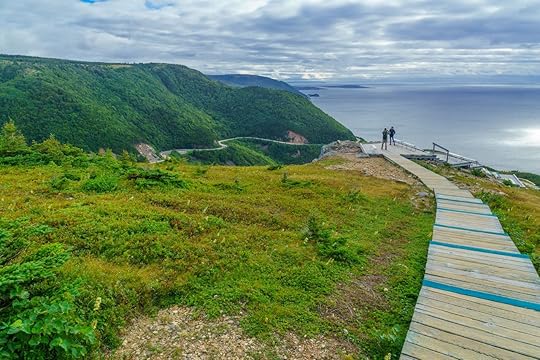
Photo: RnDmS/Shutterstock
Driving clockwise and just north of Chéticamp, you’ll enter Cape Breton Highlands National Park. About 20 minutes later, the road turns inland and you’ll reach the turnoff for one of Cape Breton’s most-photographed spots, the Skyline Trail. The easy, four-mile loop ends at wide, wooden steps leading down to a series of platforms and an overlook perched far above the highway.
Take in the bird’s-eye panorama and the Cabot Trail’s ribbon of road as it hugs the Gulf of St. Lawrence. It’s worth lingering here, so allow some extra time. Besides the Skyline Trail, the park touts 25 hiking trails, from easy to difficult, that showcase spectacular views, waterfalls, salmon pools, and Boreal forests. And, if you’re lucky, you might spot a moose.
4. Teleport to Scotland.

Photo: Margaree Highland Games/Facebook
Celtic music in North American was born in Cape Breton, and the ceilidh — pronounced “kay-lee” and meaning “party” in Scottish Gaelic — lives on with Scottish traditions and music. Festivals include summer’s eight-day Kitchenfest! featuring the island’s top Celtic talent, with over 150 musicians performing in pubs, ceilidhs, and restaurants; the Margaree Highland Games; and autumn’s Celtic Colours International Festival.
In this corner of the world, history and culture intertwine at the recreated Highland Village above Bras d’Or Lake. The Alexander Graham Bell National Historic Site celebrates where the renowned inventor built his estate and called it Beinn Bhreagh, meaning “beautiful mountain” in Gaelic, as the area reminded Bell of his native Scotland. The site displays a fascinating and surprising mix of Bell’s inventions.
5. Head to the links or out on a kayak.

Photo: Cabot Links/Facebook
Hugging the cliffs in the tiny town of Inverness, the Resort at Cabot Links claims two world-class golf courses. Even if you’re not into golf, The Links course touts hole number 16 on its own peninsula, one of the world’s most-photographed par-three holes. Sea kayaking is available, as are hourly SUP rentals out of Margaree Harbor just 30 minutes away.
On the Murray River, River Nest Wilderness Cabins (think teeny houses without a kitchen and flush toilets out back) offer fine art craftsmanship and river views. The owner operates North River Kayak, and paddling on St. Ann’s Bay to a waterfall and small beach makes for a satisfying afternoon.
Further east along on the cape, at Ingonish Beach, the Keltic Lodge at the Highlands commands its own peninsula with cliff-top views, a par-72 golf course, and the forested Middle Head trail head, which leads to a rock-strewn headland overlooking the ocean, the perfect spot for a picnic lunch. End the day at the lodge’s exceptional Arduaine Restaurant while the sun sets over North Bay.
6. Admire the work of local artisans.

Photo: Cape Breton Centre for Craft & Design/Facebook
For centuries, artists have found inspiration and solitude on Cape Breton. The Artisan Trail offers a glimpse into their working studios and galleries. Near Indian Brook, Piper Pewter’s gallery displays beautifully hand-cast and lead-free pewter jewelry created in the attached workshop — in both Celtic and contemporary designs.
Just down the road, a cabin above the highway houses Leather Works by Jolene. You’ll find a rainbow of sumptuously dyed leather totes and purses, as well as dog collars, men’s belts, and wallets. All are hand sewn. Watch the purses being cut and crafted in the workshop just behind the displays. At The Gaelic College, weavers and kilt-makers create custom kilts, ties, ponchos, and other apparel, all crafted from colorful plaids made on site.
7. Feast on lobster, and wash it down with a crisp local white .

Photo: Elizabeth Hey
No visit to Cape Breton is complete without cracking open a fresh lobster. Between the late 1800s and into the early 1900s, Nova Scotians considered lobster “junk food.” During lobster season, farmers would gather the crustaceans and plow them into their fields for fertilizer. Inmates were fed lobsters in what was considered cruel and unusual punishment of the day.
Today, lobsters pulled from the ocean are served hours later at classy restaurants and ma-and-pa establishments. For the ultimate feast, pair it with the province’s signature Tidal Bay wine, the first appellation given to the Cape Breton’s regional wines. Each winery creates its own version of this crisp white, influenced by the coastal climate, using different blends of 100 percent Nova Scotia-grown grapes. 

More like this: 11 adventures for the ultimate road trip on Prince Edward Island
The post How to explore the wild shores of Cape Breton Island in Nova Scotia appeared first on Matador Network.

Lorax tree has fallen in San Diego
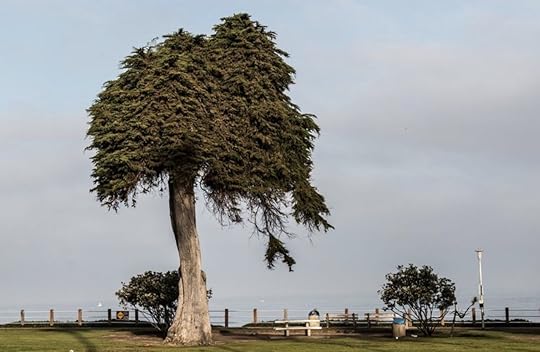
In ironic and sad news, the tree thought to have inspired Dr. Seuss’s The Lorax has fallen. The cypress, located in San Diego’s Ellen Browning Scripps Park, was visible to Dr. Seuss from his nearby home and is widely believed to have inspired him to write his famous work The Lorax.
The cause of the tree’s death is not known, as it was considered healthy. “We did have a very wet winter,” said Tim Graham of the San Diego Parks and Recreation Department, “so we’re looking at the soil to see if that may have been a factor.”
The 1971 children’s book follows a creature who attempts to defend the Truffula trees and the forest creatures from the forces of corporate greed. Written in a decade when climate change and deforestation were far from the political forefront, The Lorax is considered to be ahead of its time in addressing these issues.
The city plans to save the trunk of the tree and repurpose it, though it’s not yet clear what exact plans are in the works. A replacement will also be planted soon. The tree was estimated to be between 80 and 100 years old, so while its life may not have been long (in tree years), it at least made a significant impact during its time on Earth. 

More like this: The 9 plants you can keep alive even if you travel a lot
The post Tree that inspired Dr. Seuss’s ‘The Lorax’ falls in San Diego park appeared first on Matador Network.

US to use Galapagos for military

The Galapagos Islands, a province of Ecuador, are often thought of as a relatively untouched paradise of crystal clear waters and exotic creatures, but that may be about to change. Ecuador will now allow US military planes to operate from the islands’ San Cristobal airport in order to help combat drug trafficking. Ecuadorian lawmakers, however, are skeptical about the decision, as it could potentially have negative impacts on the islands’ conservation and biodiversity.
Congressman Carlos Viteri said that this collaboration with the US was “unacceptable,” especially if the agreement requires their country to “cede an inch of Ecuadorian territory.” Former president Rafael Correa agreed, saying on Twitter that the island is “not an aircraft carrier” for the Americans. And indeed, Ecuador’s own constitution seems to forbid such collaborations, saying that the “establishment of military bases or foreign facilities for military purposes shall not be allowed.”
Despite the backlash, defense minister Oswaldo Jarrin seems unfazed. He insisted that the American presence would not be permanent and that, “Galapagos is for Ecuador our aircraft carrier, it is our natural carrier, because it assures us permanent replenishment, interception facilities, and it is 1,000 kilometers from our coasts.”
Whether or not this military partnership proceeds smoothly remains to be seen, but it certainly looks like a few bumps can be expected in the road ahead, at least in public opinion. 
H/T: BBC

More like this: 10 things you can do in the Galapagos Islands other than look at tortoises
The post Ecuador will allow the US to launch military planes from the Galapagos Islands appeared first on Matador Network.

Scary theme-park ride video is fake

Apparently, you can’t always trust viral videos. Who knew? There’s a new video of a theme-park ride that has been making the rounds on social media and garnering quite a bit of attention for how dangerous it looks. In the video, it appears as though thrill-seekers are strapped into individual pods, slowly raised to the top of a needle-like structure, dropped in unison, and then spun around in circles in midair.
Fuck.
That. pic.twitter.com/FLq0fC0smE
— Vince (@Captain_Cunto) June 13, 2019
The video originated with Thai Twitter users, with one even amassing over 1.6 million views. The only catch is that it’s totally fake. Fooling millions online, the video was actually created using computer animation although it’s still unclear who created the video — or why.
The ride in the computer-animated video seems to be inspired by a real ride at an amusement park in South Korea, called the Gyro Drop.
The ride features a 315-foot tower with a rotating ring of 40 seats, lifting passengers into the air and then dropping them in a free fall. This might sound a bit less nerve-wracking, but it still inspired someone to get creative and use CGI to make an already nail-biting ride even more frightening. 
H/T: Gizmodo

More like this: The 7 strangest theme parks around the world
The post Viral video of scary theme-park ride is completely fake appeared first on Matador Network.

Cheap and expensive US airports

In terms of pure convenience, few places around the world can top flying from the East Coast of the United States. With multiple major cities within a few hours’ commute of each other, there is no shortage of international airports offering direct flights to just about anywhere one could want to fly. But it turns out that convenience comes at a price — the East Coast is home to many of the county’s most expensive one-way flights. A new report from FinanceBuzz compiled data from the US Department of Transportation that analyzed the average one-way departing flight cost across the nation’s 45 busiest airports.
With an average one-way departing flight running a mean $427.37, Washington Dulles International Airport (IAD) ranked as the most expensive major airport in the United States. Rounding out the top four were Charlotte/Douglas International Airport (CLT) at $425.77, Bush Intercontinental Airport (IAH) in Houston at $413.66, and Newark Liberty International Airport (EWR) at $403.74. John F. Kennedy International Airport averaged $390.20.
Las Vegas, the longtime home of mega-cheap airfare, topped the list from the other side. The average one-way departing cost from McCarran International Airport was $240.35. McCarran is the furthest from a coast of any of the five cheapest major airports in the country — the airports in Fort Lauderdale, Orlando, Oakland, and San Jose all average less than $300 per departing seat.
Another noticeable trend is that business is not the primary determining factor of an airport’s affordability. The two busiest airports in the country, LAX and Chicago O’Hare, landed smack in the middle of the rankings, with an average cost of $352.79 and $338.55, respectively. The report also noted cheaper alternatives to some of the country’s most expensive airports. Those flying in and out of Washington, DC, can save some serious dough on domestic flights by going through Ronald Reagan National Airport (DCA) or Baltimore-Washington International (BWI). If you’re looking to avoid the crowds of LAX, both Long Beach Airport (LGB) and Burbank Bob Hope Airport (BUR) are more affordable and less crowded. 
H/T: FinanceBuzz

More like this: Here’s why you should book airfare directly through the airline
The post These are the most expensive airports to fly out of in the US appeared first on Matador Network.

Marvel park to open at Disneyland

With the ever-growing popularity of the Marvel universe, it’s a surprise that Disney has yet to incorporate the characters into its amusement parks by way of their own part of the park, in the same manner as “Star Wars: Galaxy’s Edge.” That won’t be for long, however, as there are now official plans in the works for a Marvel-themed land, set to open at its California park by 2020.
As reported by The Los Angeles Times, Disney has received a number of building permits from the city of Anaheim necessary for the newest expansion; these include permits for a bathroom overhaul, a retail outlet, a microbrewery, and a character meet-and-greet area. The estimated value of the work at this time will be more than $14 million, whereas “Star Wars: Galaxy’s Edge” cost $1 million.
To make way for the new additions, Disney is closing “A Bug’s Land,” an area based on the 1998 film A Bug’s Life. As a sign of what’s to come, “A Bug’s Land” has been closed off by a construction wall that has the iconic Stark Industries logo on it.
While this is the first time Disney has designated a specific area for a Marvel-themed land, it’s not the first Marvel ride to be integrated into one of its parks. The first one was in Disneyland Hong Kong, called the “Iron Man Experience,” a 3D simulator where Tony Stark recruits riders to help fight aliens that are attacking the city. A Guardians of the Galaxy-themed ride also, somewhat controversially, replaced the iconic “Tower of Terror.” Other attractions and character meet-and-greets have been added to various parks over the years, and there are plans to continue to do so, but Disney has yet to release any specifics on what kinds of attractions the Marvel land will have.
Of the new expansion, Disney said, “The new themed land will be anchored by the popular ‘Guardians of the Galaxy – Mission: BREAKOUT!’ at Disney California Adventure park, which has become the highest-rated attraction at Disneyland Resort since its 2017 opening. The Guardians of the Galaxy will be joined by Spider-Man and the Avengers in what will become a completely immersive Superhero universe.”
It won’t actually be called “Marvel Land,” however. The name won’t be able to even have the word “Marvel” in it at all due to licensing agreements that existed before the Disney-Marvel deal in 2009.
More details are expected to be released at the D23 Expo, Disney’s annual event that provides an inside look at upcoming new projects, exclusives, celebrity appearances, and more. 
H/T: Travel and Leisure

More like this: The new Hagrid ride opens tomorrow at Wizarding World, and this is what Potterheads are saying
The post Disneyland plans to open a Marvel-themed land by 2020 appeared first on Matador Network.

Matador Network's Blog
- Matador Network's profile
- 6 followers



